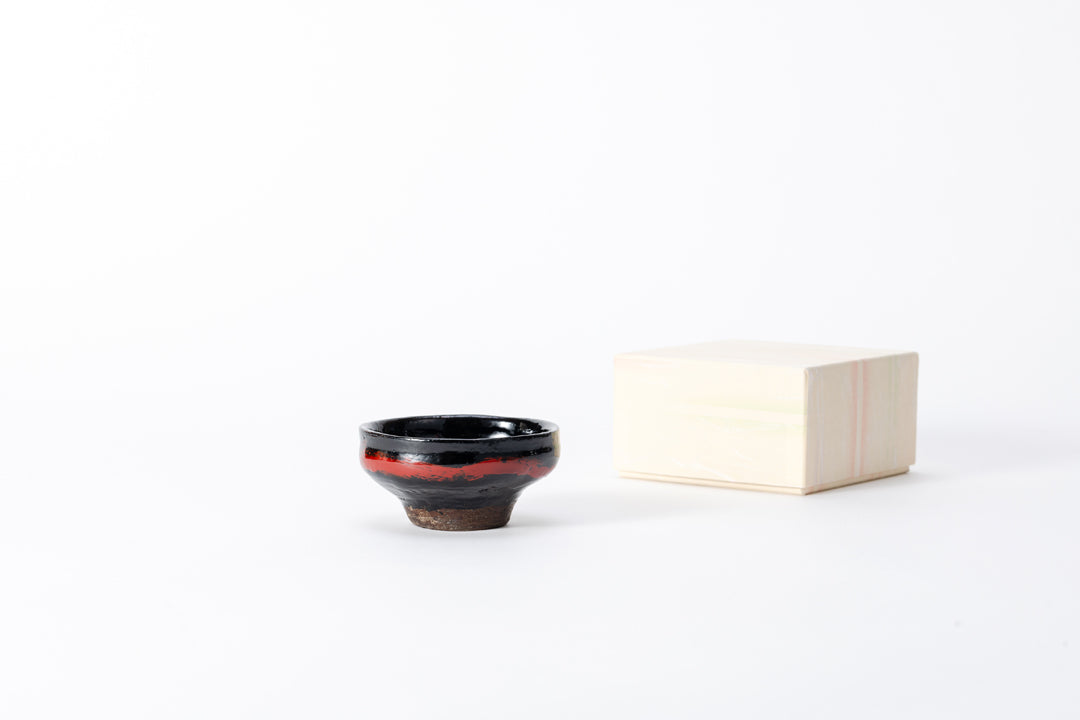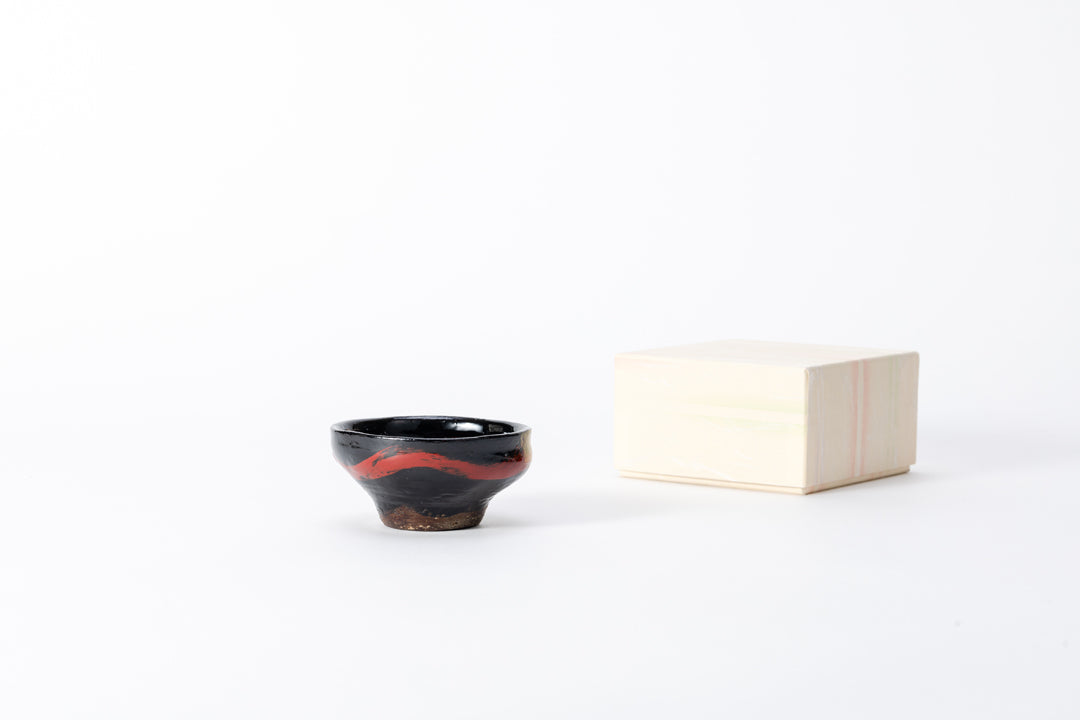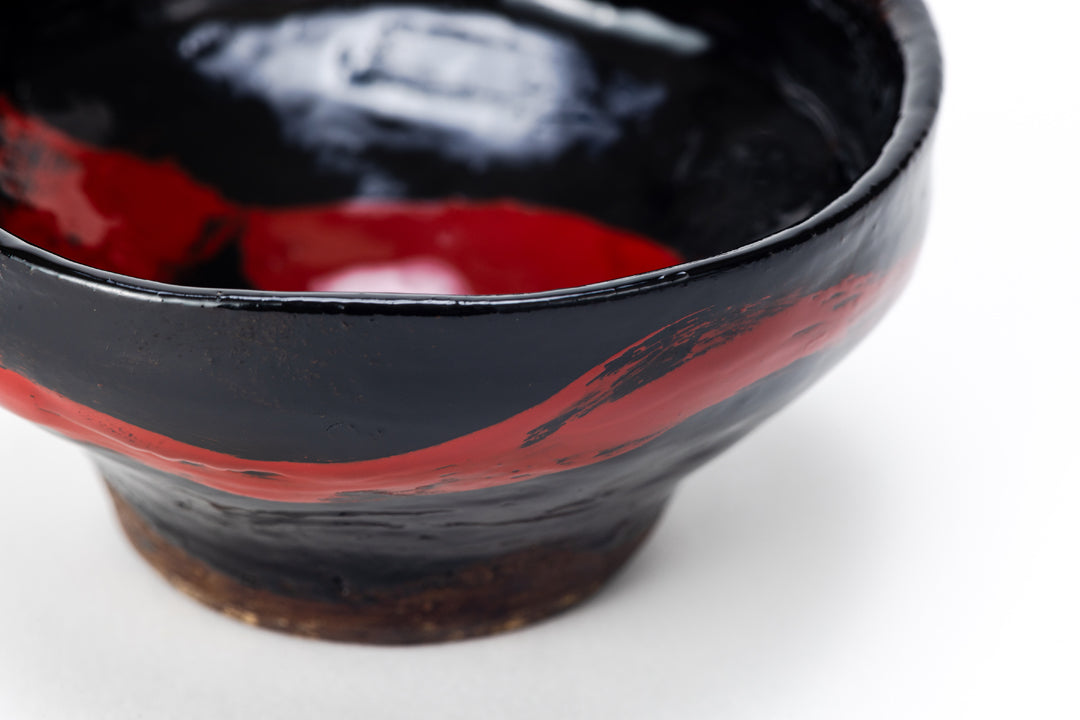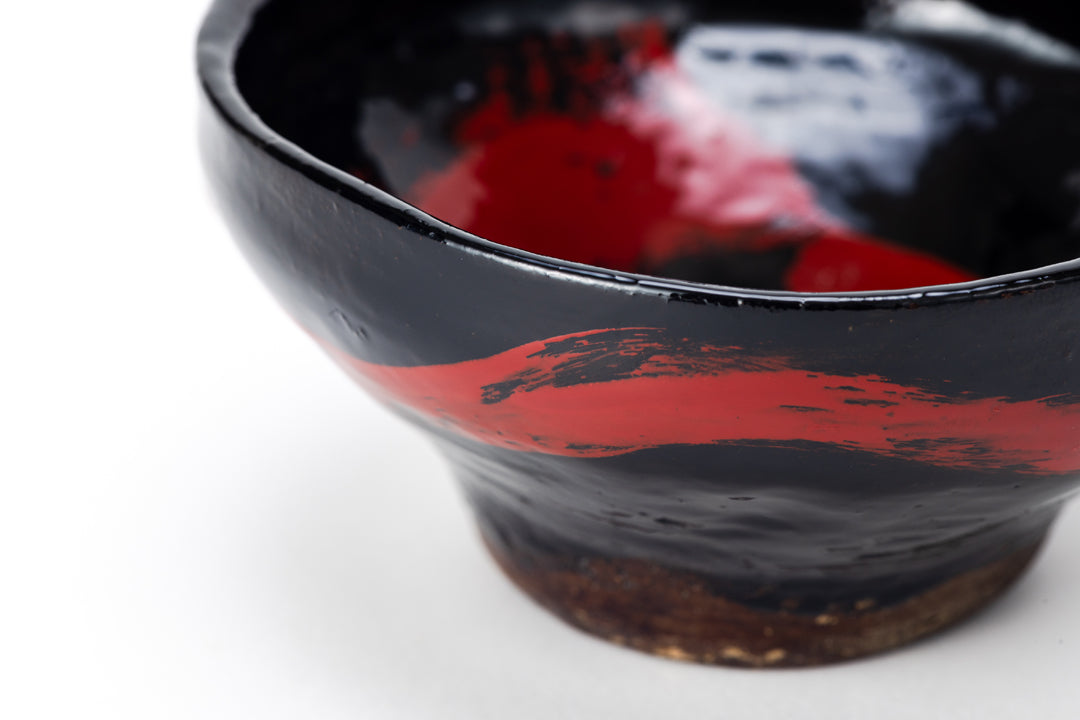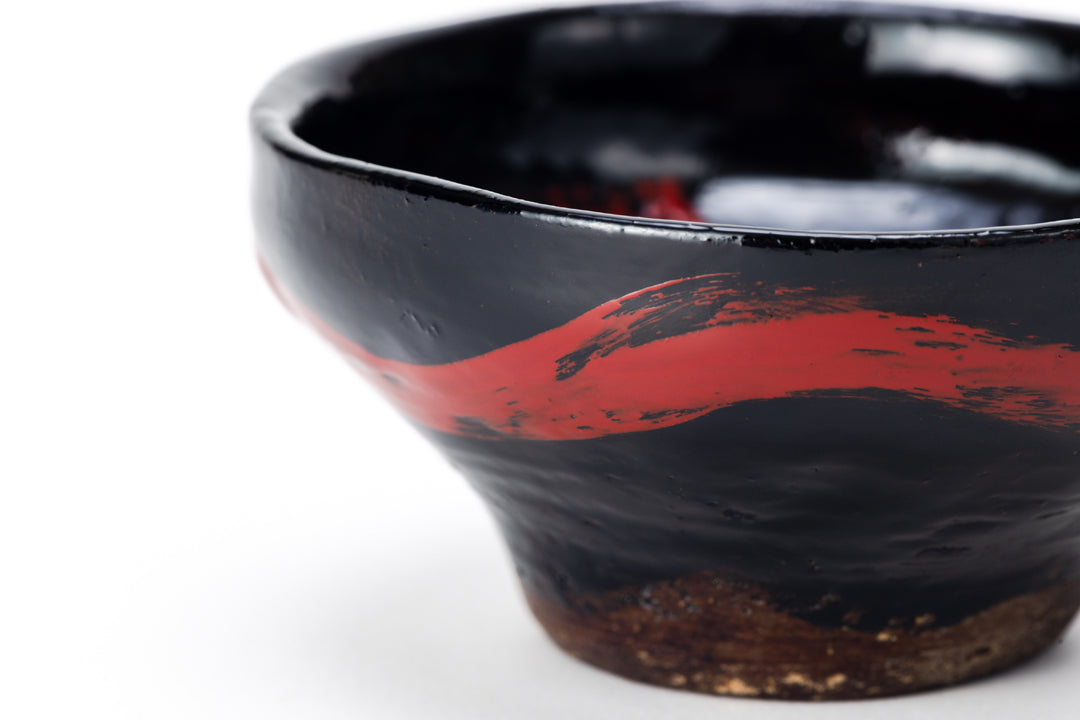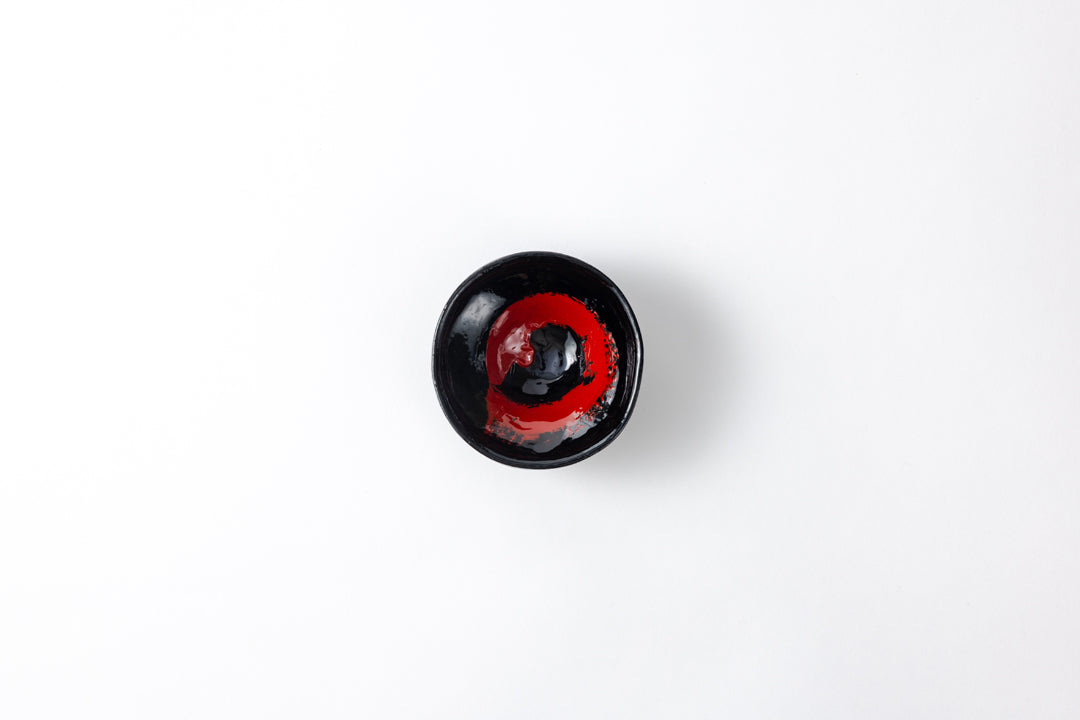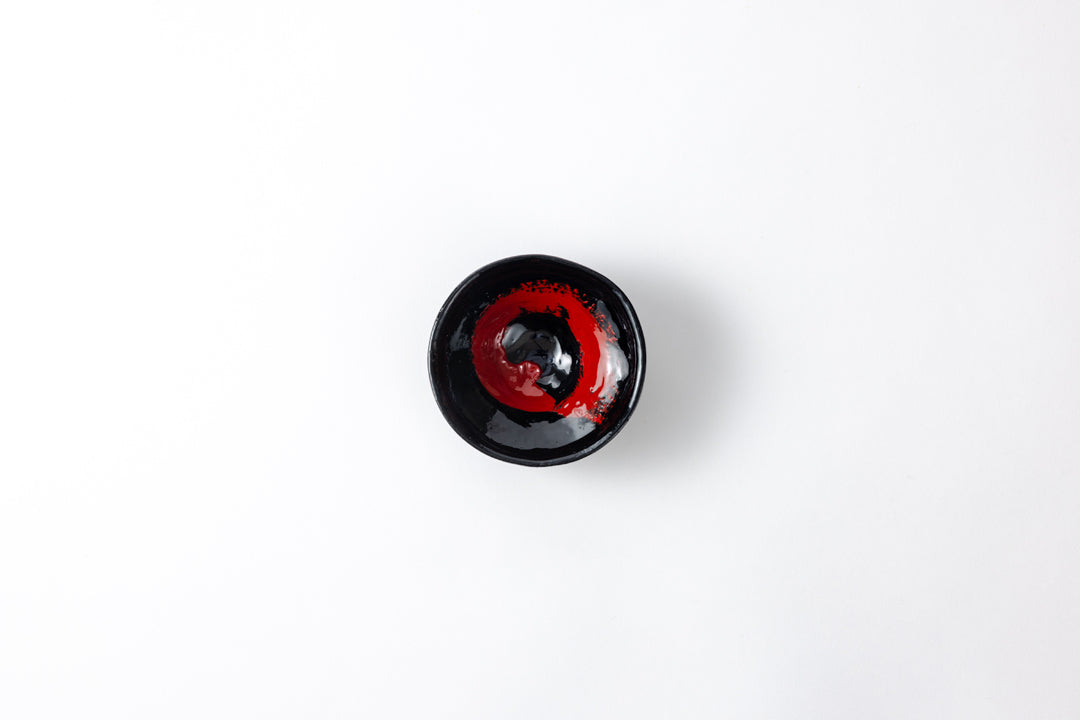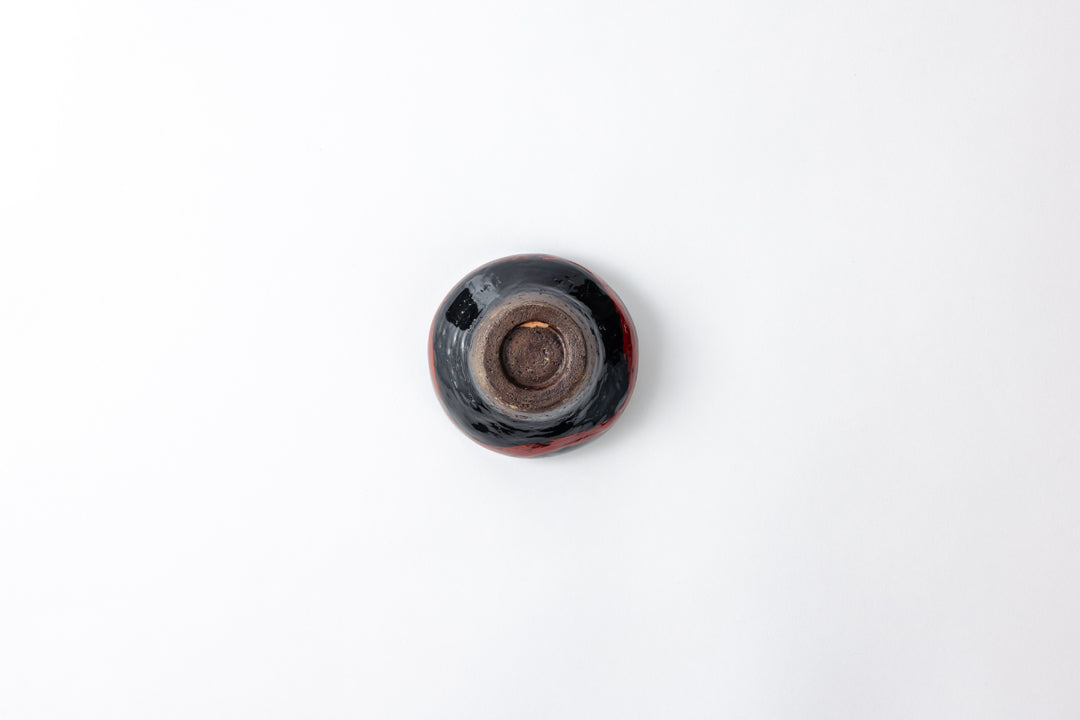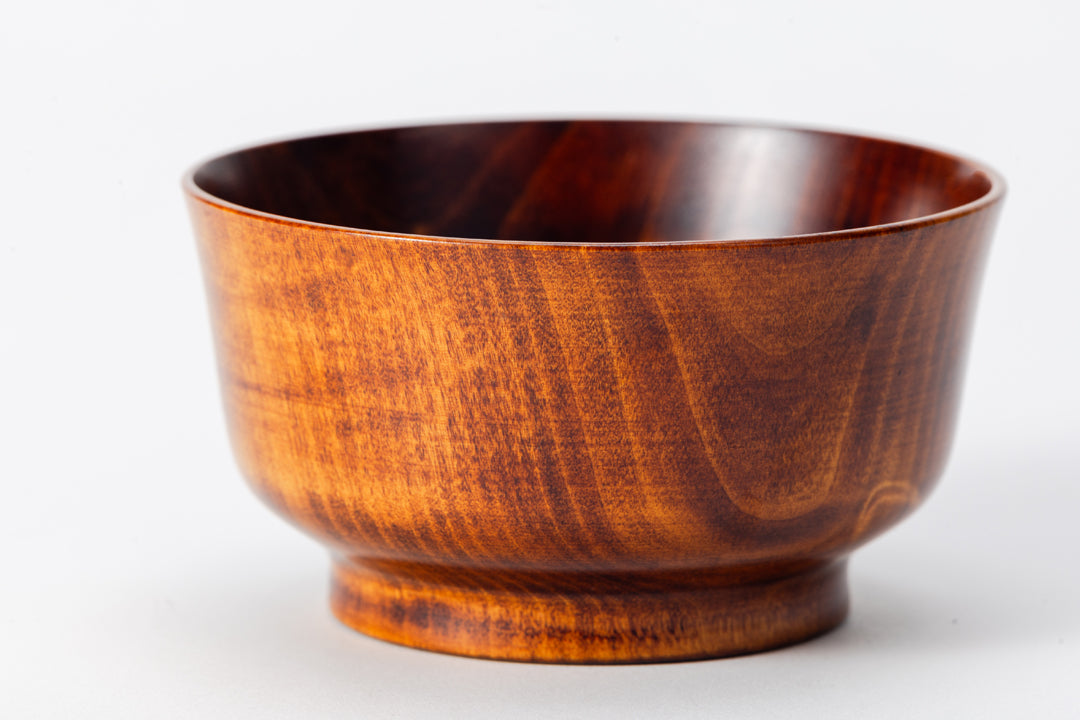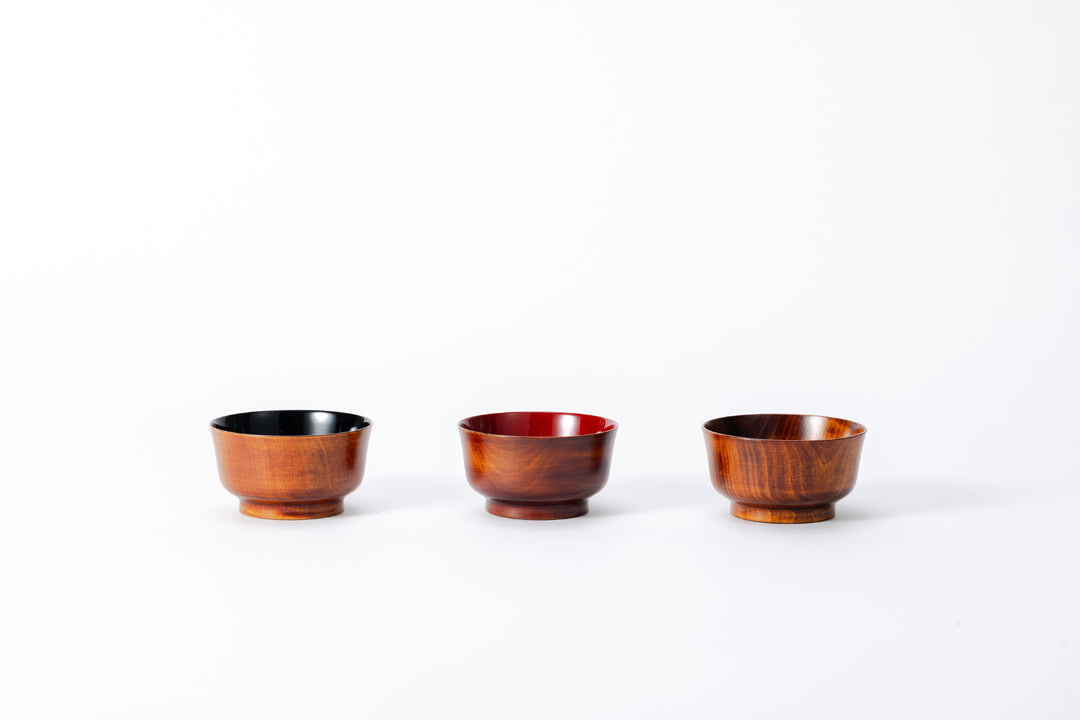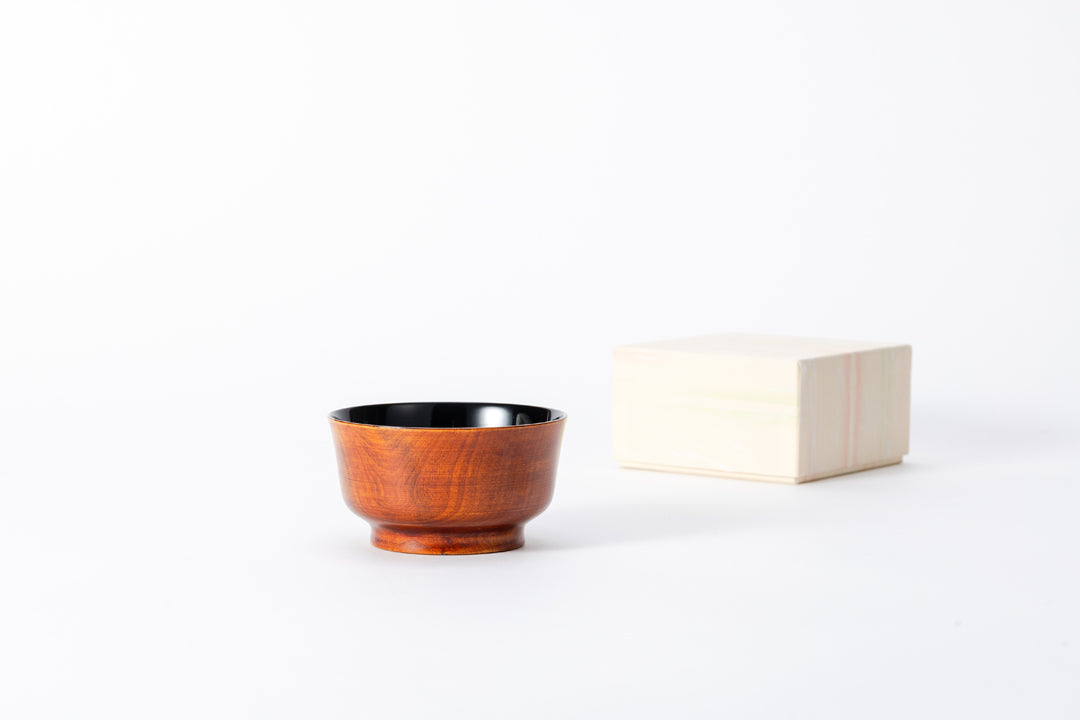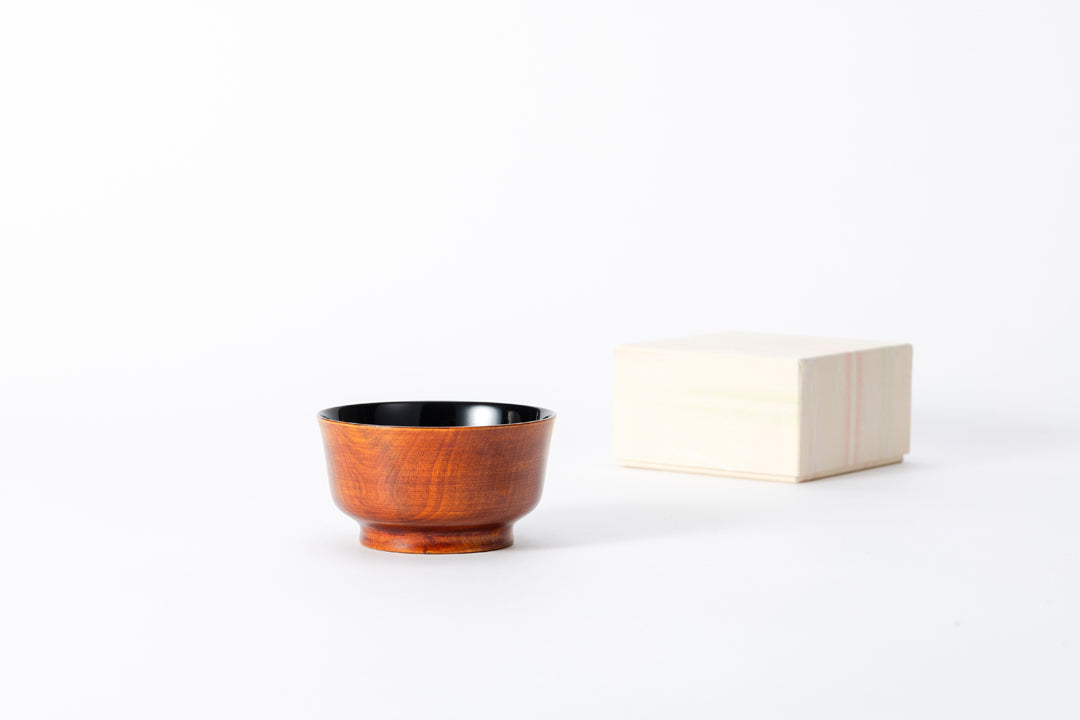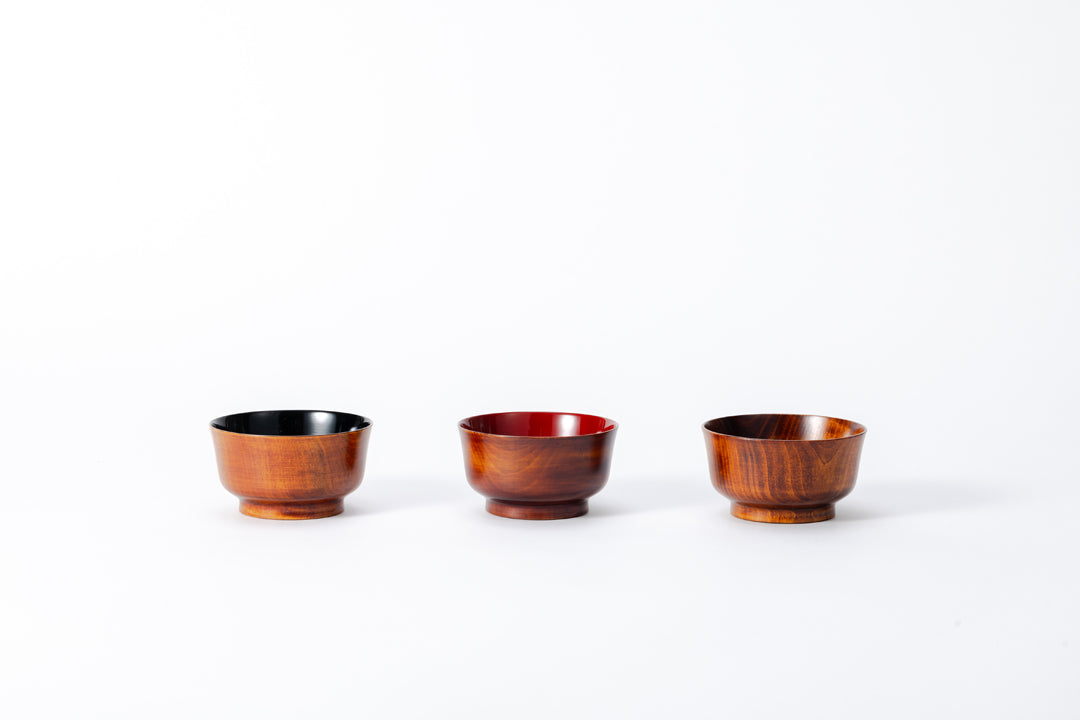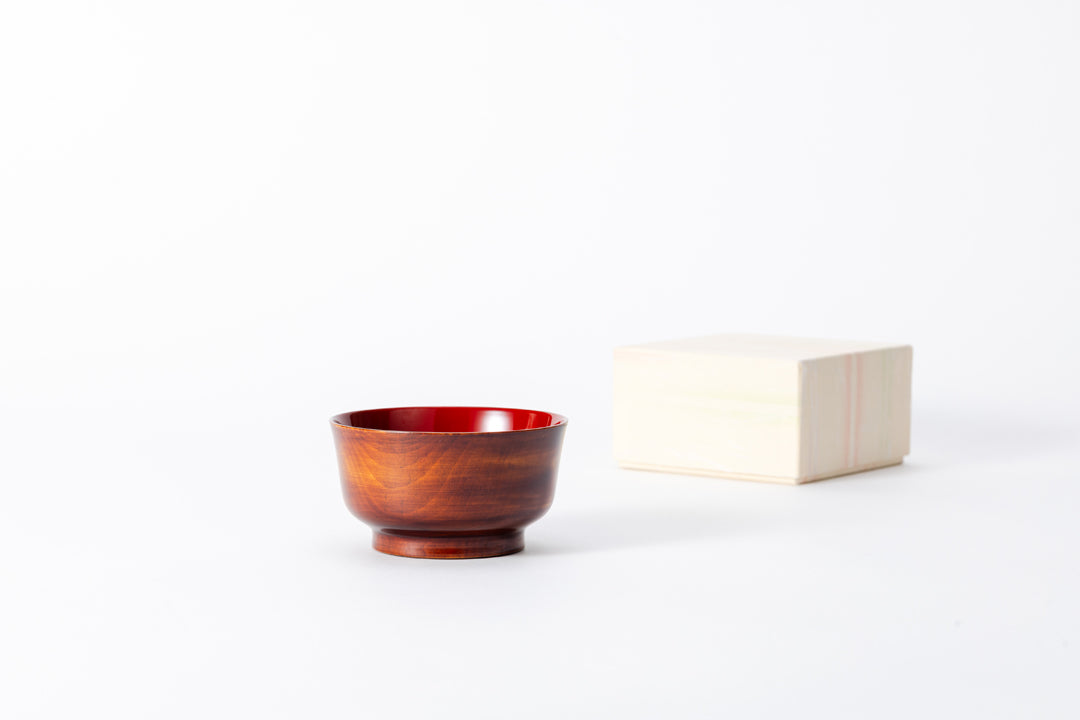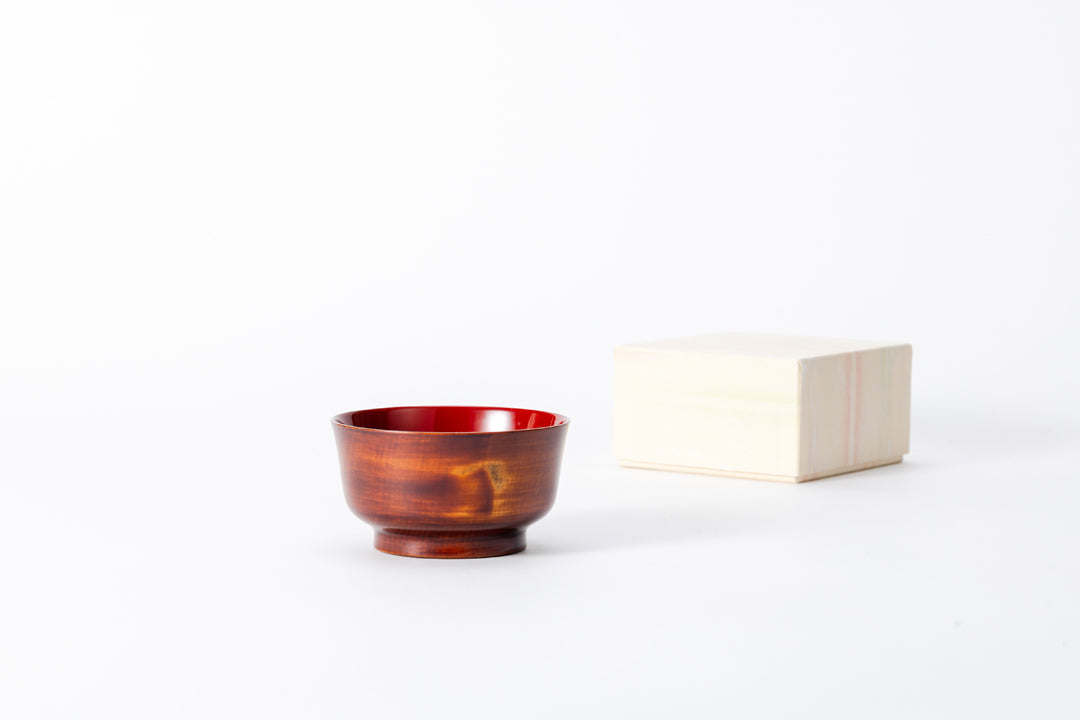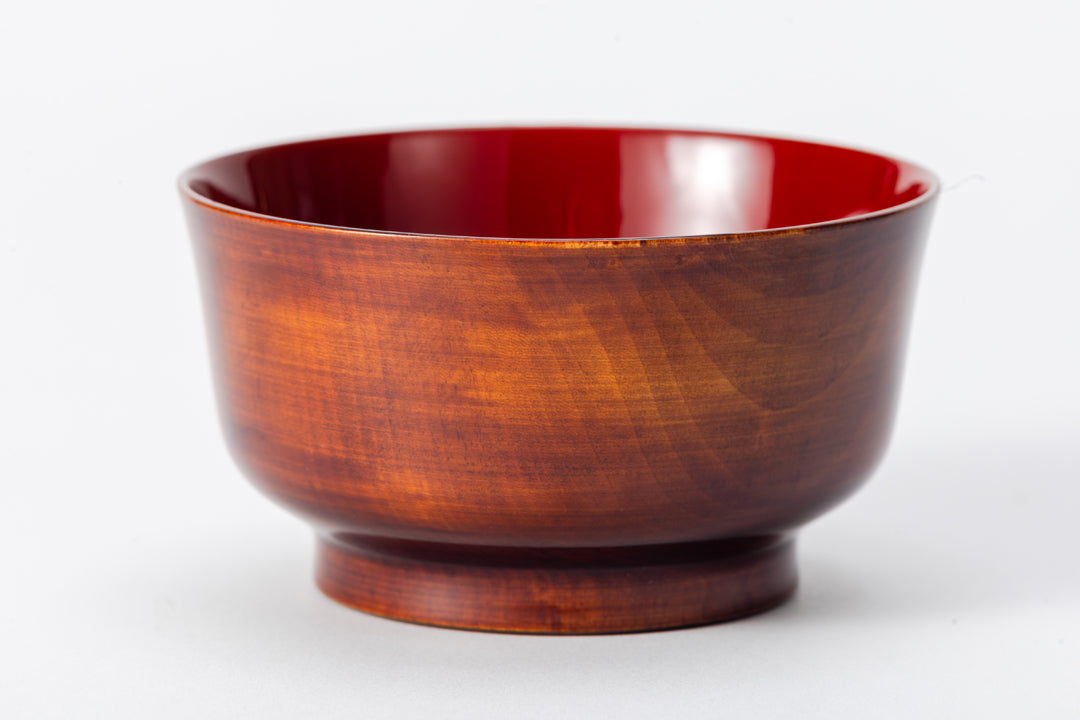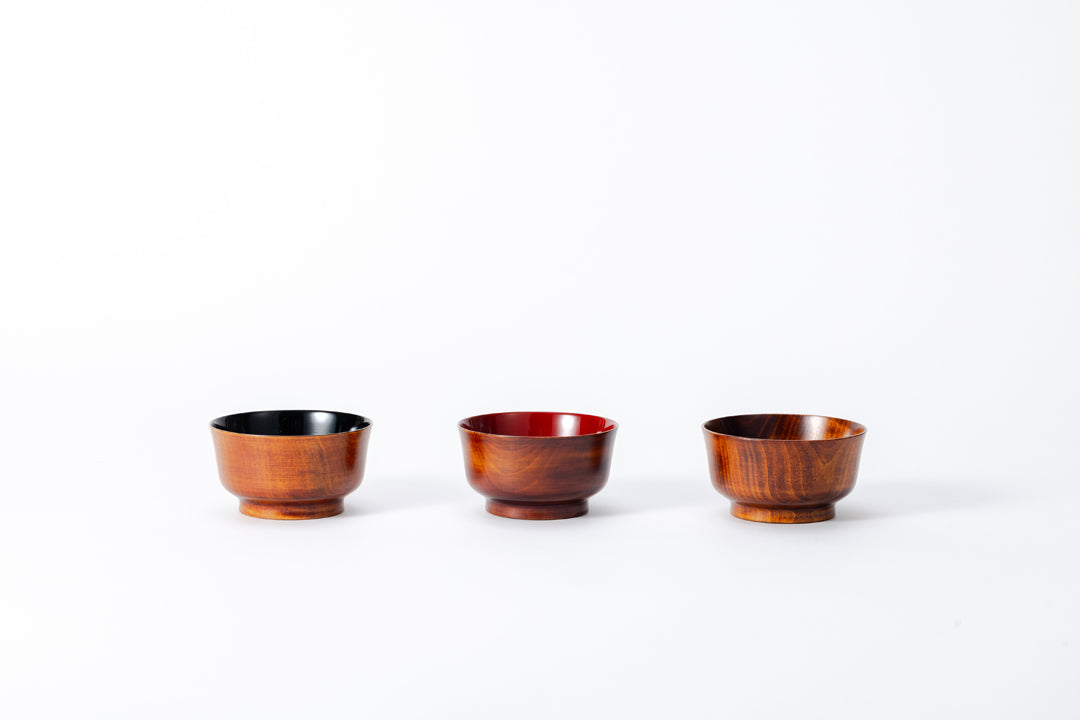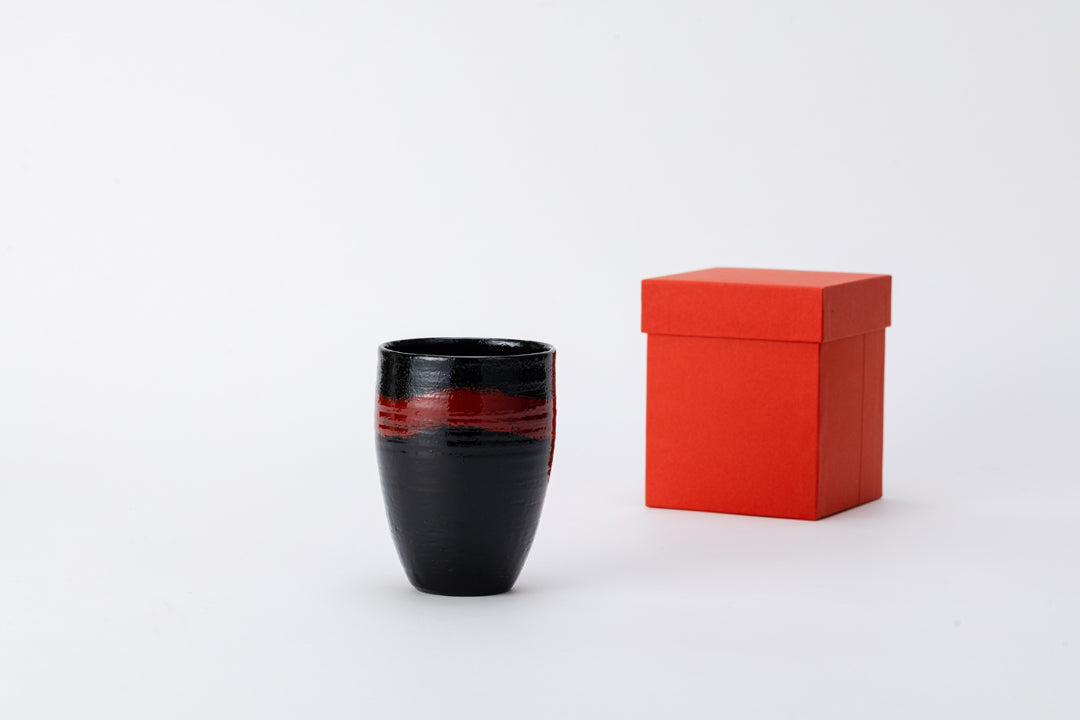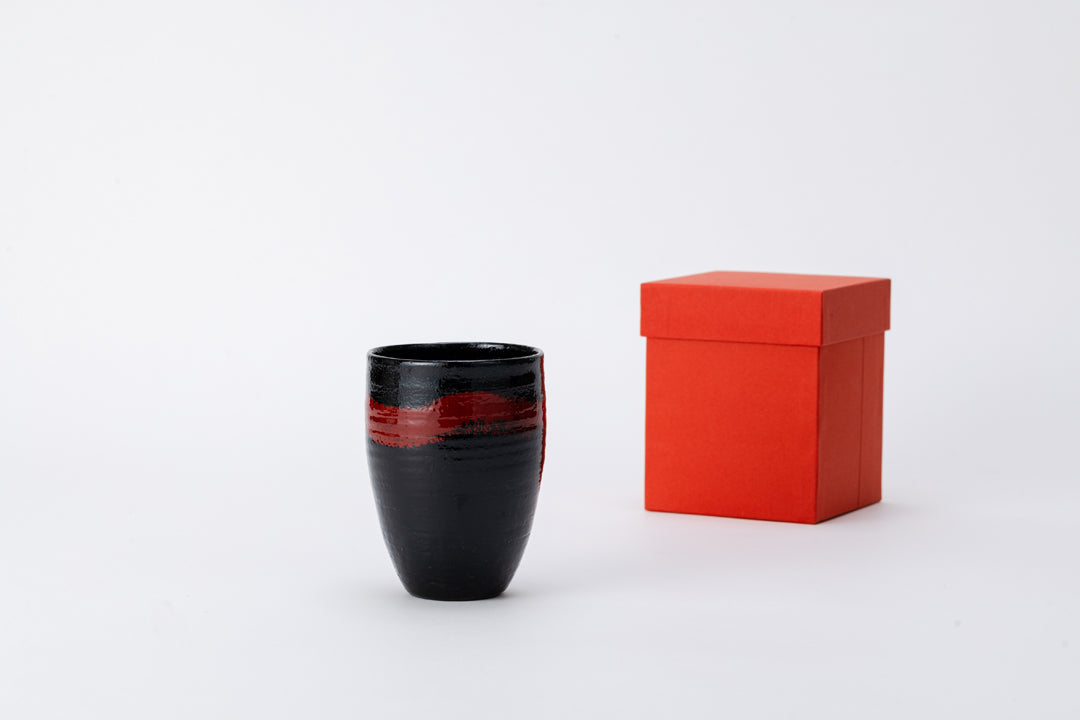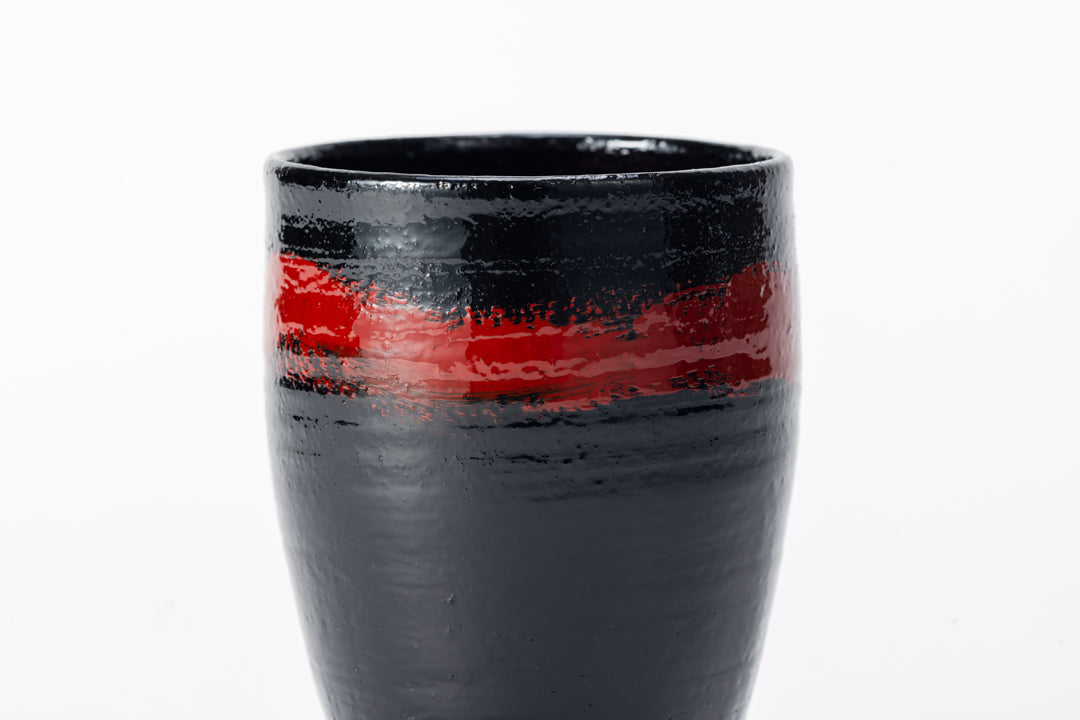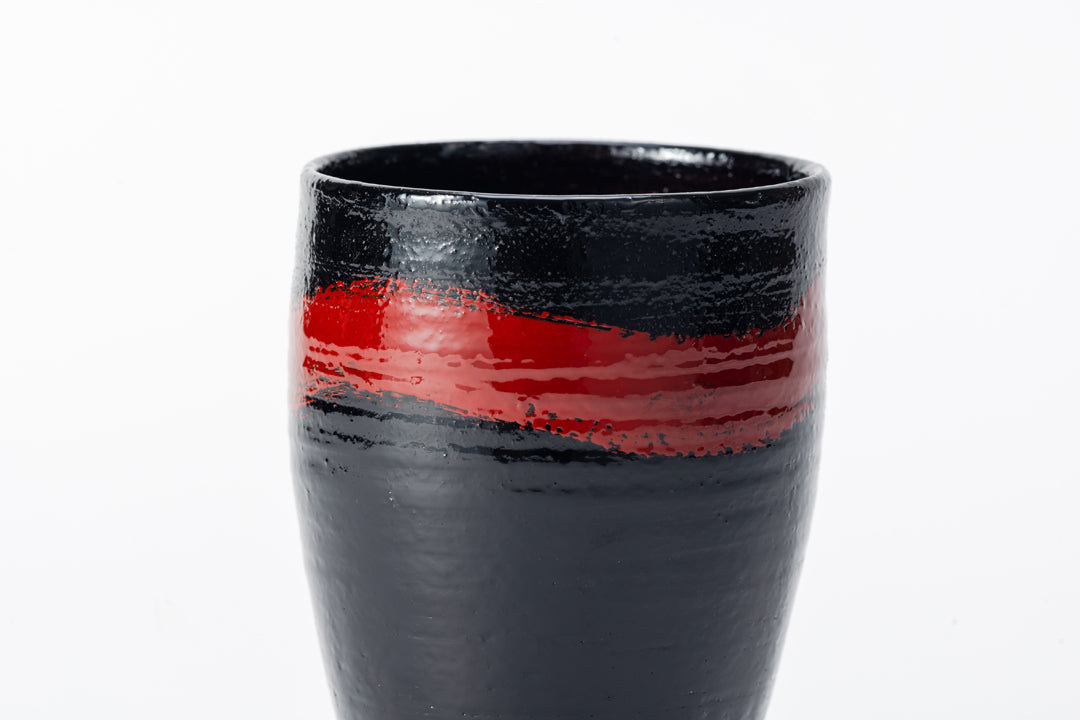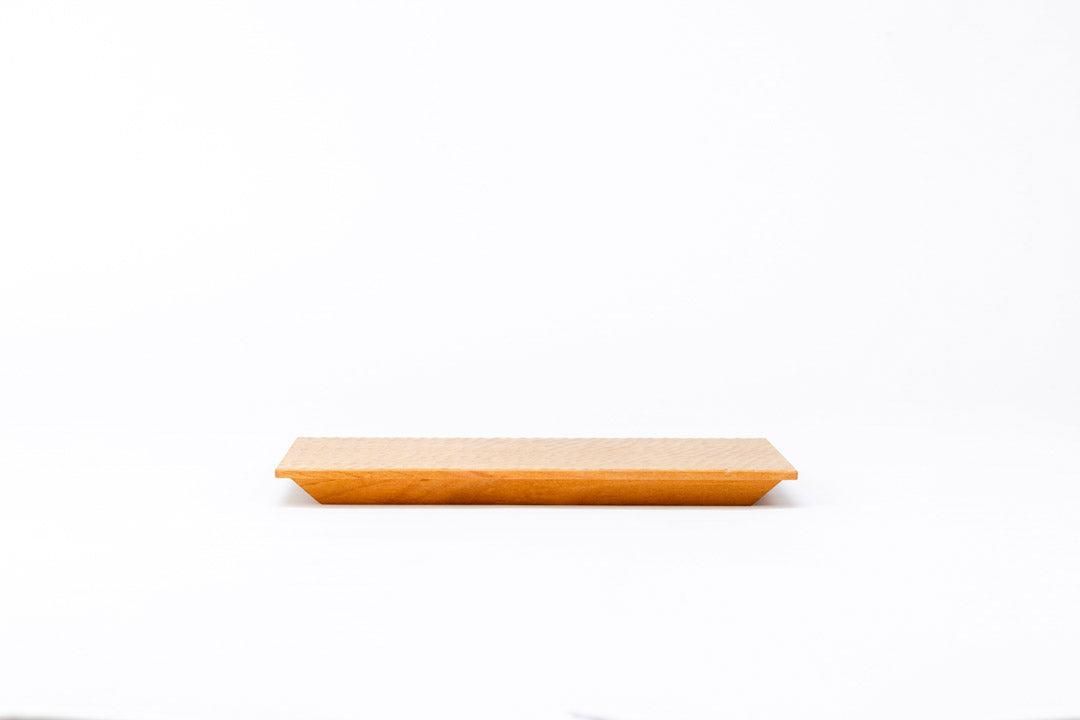Urushi is Japanese lacquer derived from the sap of the urushi tree. The sap is refined in a highly specialized process to make urushi and applied to objects, usually wood, in layers, sometimes decorated with gold and other metallic powders in a process called maki-e. Urushi sap’s properties have been used since the earliest historical period of Japanese history, the Jomon period, for daily utensils and works of art. The warmth of wood and the softness of urushi against the hands and lips are an important part of Japanese dining, where bowls are often raised to the mouth when eating.
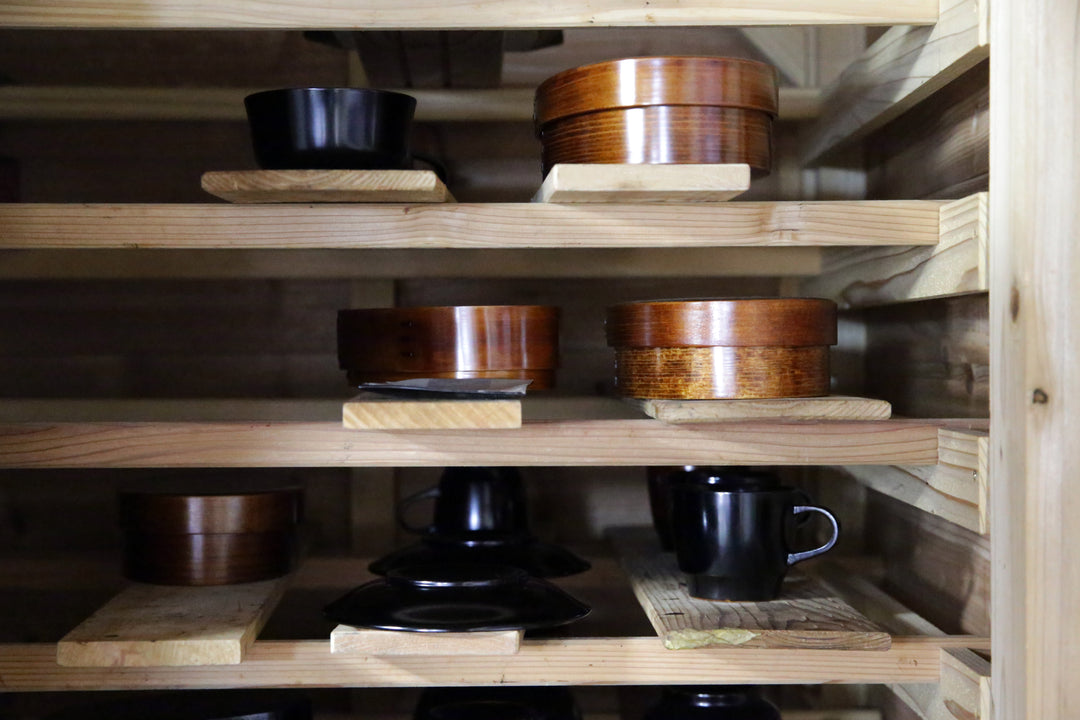
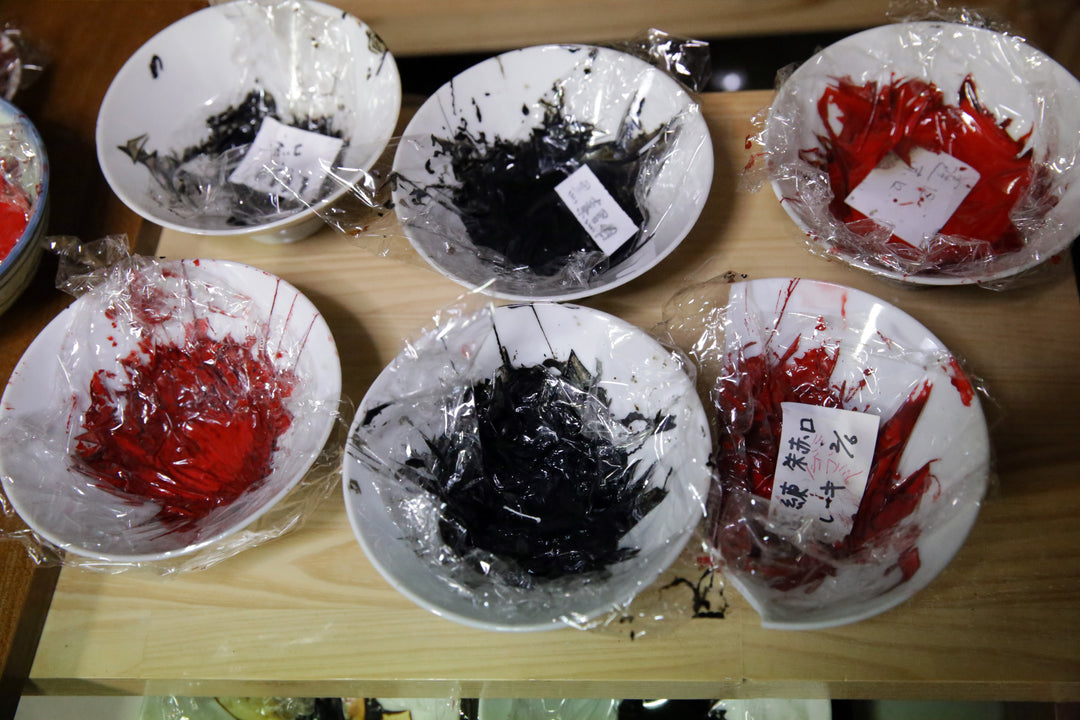
The crafting of urushi wares involves several processes performed by specialized craftspeople. Urushi is harvested by urushi-kaki craftsmen who specialize in collecting the sap from urushi trees. They score the bark of the trees and quickly collect the sap before it hardens, scoring in such a way to minimize harm to the tree and allow water and nutrients to continue to flow through. The wood objects which urushi is appliedto are crafted by woodworkers, and the urushi is applied by urushi artisans in a process called nuruishi. In some cases, the final step is maki-e, the adding of decorative gold and other precious powders.
A large part of the urushi artisan’s work is making a perfect surface to apply the urushi to by grinding down irregularities in the wood with a handheld grindstone called a toishi, and filling in the wood’s natural grain. Then, urushi is carefully applied, layer by layer. It is lightly sanded and finished with a final coat, creating impossibly smooth surfaces one almost cannot believe are handmade from materials found in nature.
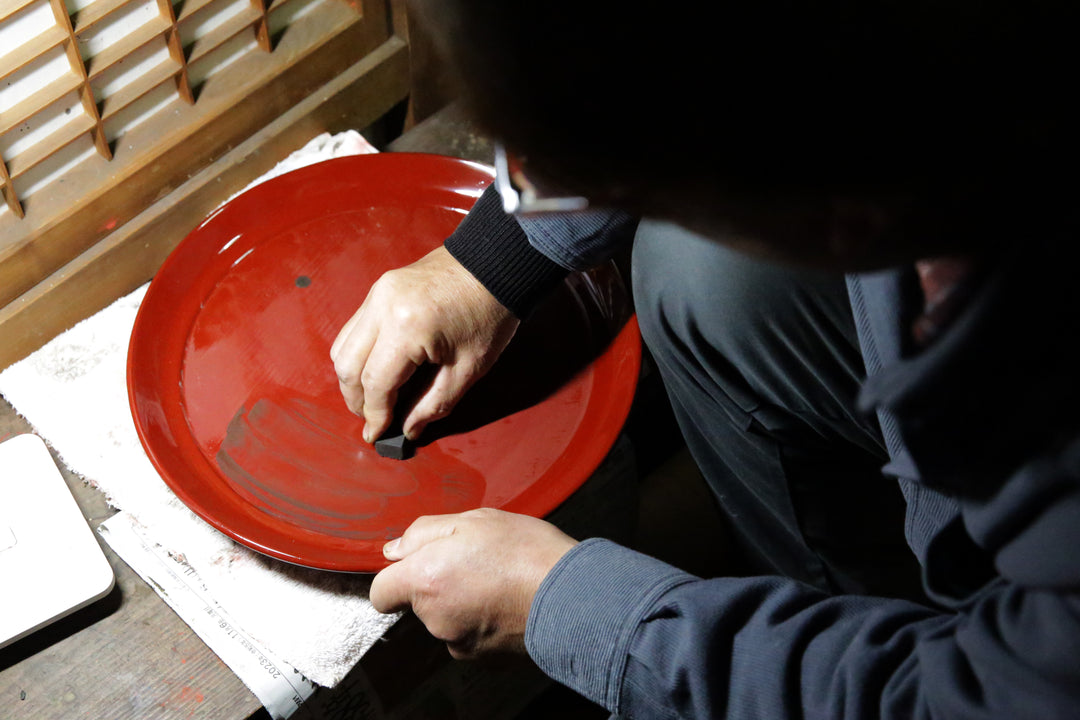
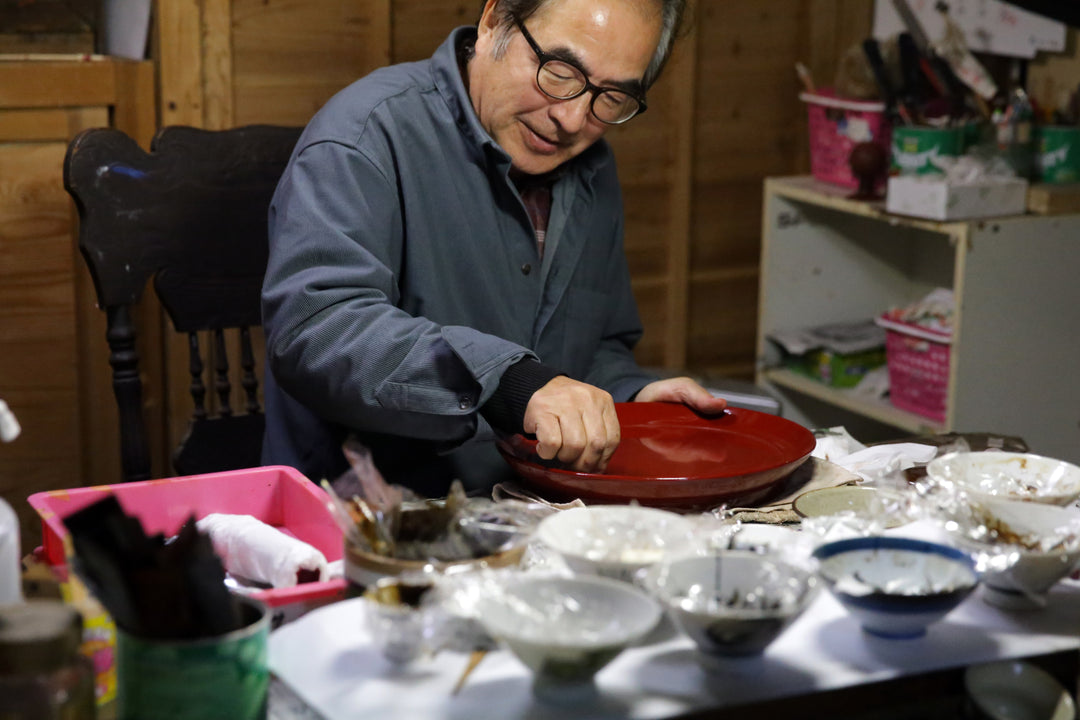
Urushi master Iwao Hashiyada comes from a long line of urushi masters hailing from Aizu Wakamatsu, Fukushima Prefecture, an area where urushi crafting traditions run deep to this day. After inheriting the business from his father, Hashiyada opened his studio, Kaishudo, in Tottori, the home of his wife. The “kai” (會) in Kaishudo, which means “gathering,” uses the old Japanese characters for Aizu Wakamatsu, a reference to Hashiyada’s hometown.
Tottori Prefecture has a long history of urushi cultivation and craftsmanship, with Saji urushi having been a source of revenue for the Tottori Domain during the Edo period. Although Tottori was once one of the leading producers of urushi in Japan, production eventually fell into decline due to various reasons during the late Showa period. However, the craft did not die out. Generations of urushi cultivation, collecting, and crafting knowledge live on in the descendents of urushi artisans, who have been increasing the number of urushi trees in Saji in recent years. Iwao Hashiyada joins them as part of the Saji Urushi Research Group, passionately researching the local urushi harvesting history and planting urushi trees, which take 10 years to yield sap. They now have 200 urushi trees growing.






